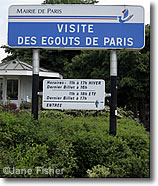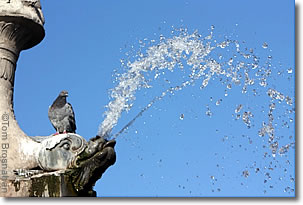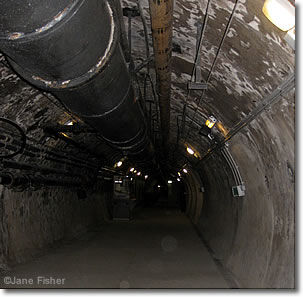 |
Les Égouts (Sewers) of Paris, France | |
| In the world's most beautiful city, who would want to see the sewers? Answer: anyone interested in urban engineering and how a great city actually works. | ||
|
|
|
Lots of people, especially those who have read Victor Hugo's Les Misérables or watched old movies of World War II resistance fighters, want to venture into "underground Paris." The Paris Sewer Museum (Les Égouts de Paris), operated by the city of Paris on the Quai d'Orsay at Pont de l'Alma (map) is the place to start. Most of us don't think much about sewers (except, perhaps, when they don't work), but in fact wastewater disposal is a foundation of civilization. You can't have a great city without copious supplies of fresh water, and a a robust, efficient system for disposing of it after use. The development of Paris's sewer system began in 1370 with the first underground pipe to carry wastewater. King Louis XIV expanded the system greatly in the late 1600s, but little was done during the entire 18th century despite the city's growth. It was Napoleon I who finally expanded the system to 30 km (19 miles) of vaulted tunnels in the early 1800s. Paris' present sewer system is actually an engineering marvel, laid out by Baron Haussmann, prefect for the Seine, in 1850. By 1878 it was a 600-km (373-mile) system of stone-vaulted tunnels and hydraulics works.
During the 20th century the system was modernized and extended to 1000 km (621 miles), carrying the city's used water to modern treatment plants. If the mechanical guts of a great city interest you, get in line for a visit on one of the few afternoons when a glimpse of the sewers is offered. Bring a flashlight/torch if you have one. Les Égouts de Paris (Paris Sewer Museum) Métro: Alma Marceau, then south across Pont de l'Alma RER: Pont de l'Alma.
|
|
Where does the water go from here?
|



